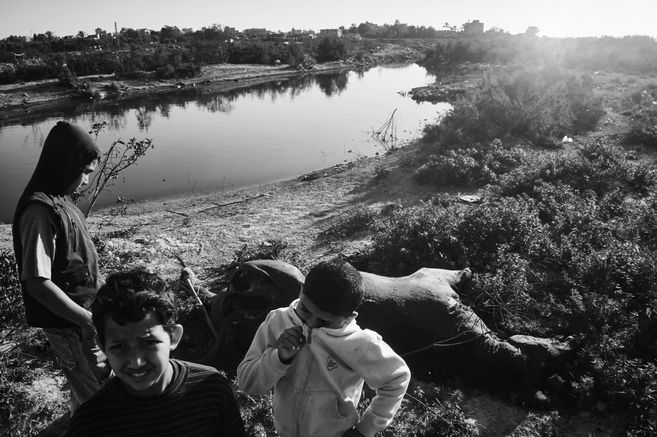DROPS
2015
Gaza is an isolated land so tiny and poor of resources, that it remains totally dependent from the “exterior,” even just to feed its population. The main resource for survival, water, makes no exception.
In the past, the underground was the primary source for drinkable water, but years ago the over-exploited coastal aquifer started absorbing water from the polluted sea, contaminating the little fresh water remained intact.
Municipalities are unable to provide drinking water to their citizens, so people must buy it privately. Filtered water may cost up to 4,5 dollars per cubic meter, and of course barely a few can afford to buy it.
After the Protective Edge operation in the summer of 2014, many water and electricity infrastructures were severely damaged, causing a serious emergency in the immediate aftermath. Almost one year later, the path to recovery is still to be found.
In this economic disaster, sanitation becomes a major issue for everyone. Awareness is growing as people begin to worry about their health. In absence of treatment, sewage runs a very similar circle to water, ultimately leading to a dangerous mix that is pumped back to everyone’s tap. In absence of huge and very exceptional investments this cycle cannot be broken. Living standards are obviously facing fast and constant degradation.
The people of Gaza are like walking dead, heading toward what now seems to be an inevitable destiny of misery. Something must change, forcefully and rapidly, otherwise all will be lost. The survival of an entire generation, particularly the youngest, most numerous, fragile, and exposed, is at risk.










































































